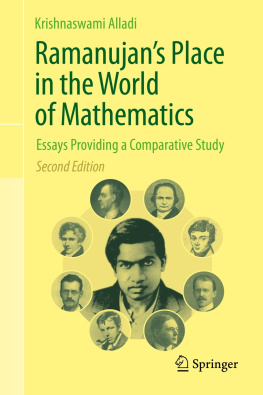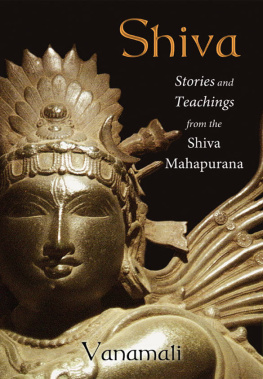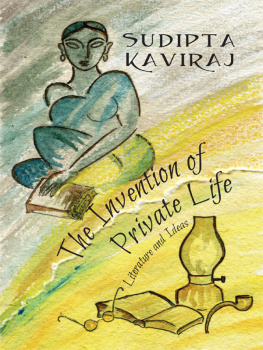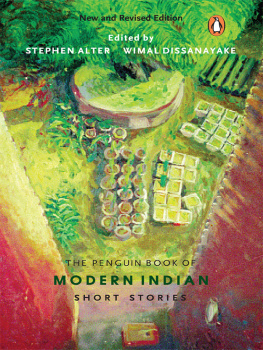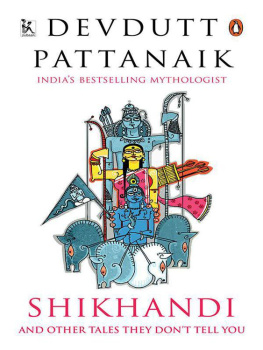Alladi Mahadeva Sastri (tr.) - Dakshinamurti Stotra
Here you can read online Alladi Mahadeva Sastri (tr.) - Dakshinamurti Stotra full text of the book (entire story) in english for free. Download pdf and epub, get meaning, cover and reviews about this ebook. genre: Religion. Description of the work, (preface) as well as reviews are available. Best literature library LitArk.com created for fans of good reading and offers a wide selection of genres:
Romance novel
Science fiction
Adventure
Detective
Science
History
Home and family
Prose
Art
Politics
Computer
Non-fiction
Religion
Business
Children
Humor
Choose a favorite category and find really read worthwhile books. Enjoy immersion in the world of imagination, feel the emotions of the characters or learn something new for yourself, make an fascinating discovery.
- Book:Dakshinamurti Stotra
- Author:
- Genre:
- Rating:3 / 5
- Favourites:Add to favourites
- Your mark:
- 60
- 1
- 2
- 3
- 4
- 5
Dakshinamurti Stotra: summary, description and annotation
We offer to read an annotation, description, summary or preface (depends on what the author of the book "Dakshinamurti Stotra" wrote himself). If you haven't found the necessary information about the book — write in the comments, we will try to find it.
Dakshinamurti Stotra — read online for free the complete book (whole text) full work
Below is the text of the book, divided by pages. System saving the place of the last page read, allows you to conveniently read the book "Dakshinamurti Stotra" online for free, without having to search again every time where you left off. Put a bookmark, and you can go to the page where you finished reading at any time.
Font size:
Interval:
Bookmark:
 |
Dakshinamurti Stotra translated by Alladi Mahadeva Sastri [1920] |
Dakshinamurti is an aspect of the Hindu god Shiva, as a teacher.Dakshinamurti literally means 'one who is facing south.'An image of Shiva as Dakshinamurti is part of every temple to Shiva,installed facing south.
This work primarily contains the Dakshinamurti Stotra, along withcommentary by the translator, as well as two shorter works, thePranava-Vartika and the Dakshinamurti-Upanishad.The Dakshinamurti Stotra is a treatise on Hindu philosophy, attributedto the sage Sankaracharya, comparing various schools of thought,including Buddhism, concerning the nature of reality.
Title PagePreface to the First EditionPreface to the Second EditionContentsIntroduction
>
Scanned, proofed and formatted by John Bruno Hare at sacred-texts.com, March 2009. This text is in the public domain in the US because it was published prior to 1923.
>
This volume comprises the following works literally translated into English with explanatory comments:
i. Sri Sankaracharya's Dakshinamurti-Stotra, an ode to the Divine Self, with Sri Suresvaracharya's exposition named Manasollasa "Brilliant play of thought."
ii. Sri Suresvaracharya's Pranava-Vartika treating of the contemplation of the Supreme Atman by means of the Pranava.
iii. Dakshinamurti-Upanishad.
Sankaracharya's immortal Hymn and the two works of Suresvaracharya herein comprised epitomise the whole Vedanta Doctrine as expounded by the two authors in their commentaries on the Upanishads, and form a good introduction to a study of the subject. As a terse expression of the fundamental truths of the Vedanta, the well-known Hymn of Sankaracharya forms a suitable text upon which the student may meditate and thereby construct the whole doctrine for himself. The reader will also be struck with the catholicity of the teaching, which is not addressed to any particular class of people nor contains any reference to distinctions of caste and religious order. While concisely stating the process by which the oneness of Self and the unreality of all else is established. Manasollasa is more original and telling than any of the later manuals which state the doctrine as derived from the expositions of the two eminent leaders of the Advaita-Vedanta school of thought.
Very little need be said regarding the high position which Sankaracharya holds among the teachers of
the Vedic Religion. Of Suresvaracharya, however, his immediate disciple and literary collaborator, ordinary students of Vedanta know less than they ought to, simply because his writings have long remained inaccessible to all but the very select few who entered the fourth order of sannyasa and were intellectually qualified to study the highly erudite exposition of philosophy and metaphysics. Suffice it to say that, according to all received accounts, the great aim of Sankaracharya's missionary peregrinations was to secure the eminent mimamsaka's allegiance to his own system of Vedanta. The nature of the work to which this disciple is said to have been detailed by the Teacher, and the masterly fashion in which he has done it,the work, namely, of elucidating systematising, supplementing and even improving upon the great Master's teachings,more than justifies the honourable position which tradition has unanimously accorded to him. He is known as the Vartika-kara, author of elucidative commentary on the teachings of Sankaracharya who is known as the Bhshyakra, author of original commentaries. "Vartika" is defined as follows:
Uktnuktaduruktarthavyaktakari tu vartikam.
"A vartika is that which clearly explains what has been said, what has been left unsaid, and what has been ill said." Five works of the kind are attributed to Suresvaracharya, all of them having been recently published in India:
(1) Manasollasa (Mysore).*
(2) Pranava-vartika ( ).*
(3) Naishkarmya-siddhi, a manual of Advaita doctrine (Bombay Sanskrit Series).
(4) An exposition of Sankaracharya's commentary on the Taittiriya-Upanishad (Poona, Anandasrama Series).
(5) An exposition of Sankaracharya's on the Brihadaranyaka-Upanishad (Poona, Anandasrama Series).
Suresvaracharya's exposition of the Vedanta Doctrine is often very original and is throughout marked with such thoroughness, precision, and clearness that it forms a very valuable supplement to the teachings of the Upanishads; and its authority on all knotty points is acknowledged with due reverence and submission by all the Advaitic writers of later days.
As an effective aid to a right understanding of the truths taught in the Vedanta, Sankaracharya's Hymn as well as Sruti inculcates highest devotion to the Divine Being as the Guru of Gurus, and an equal devotion to one's own immediate Guru who should be regarded as an incarnation of that Guru of Gurus. The Dakshinamurti-Upanishad shows in what form Siva, the Guru of Gurus, should be imaged and devoutly worshipped in the heart by the neophyte who is about to engage in a contemplation of the truths taught in the hymn. The style of the Upanishad is in perfect keeping with the character of the Minor Upanishads described in my introduction to "the Minor Upanishads, Vol. I."
As Suresvarcharya's Manasollasa refers to various philosophical systems of his day, I have thought it necessary to add an introduction to it treating briefly of the origin, methods, and fundamental tenets of the several systems referred to, so that the reader may have a comprehensive view of the whole range of Indian
philosophy, at whose summit, towering high above all, stands Vedanta, the pinnacle of Aryan thought.
A. Mahadeva Sastri
MYSORE,
24th May 1899.
>
In this edition the Sanskrit texts of Manasollasa and Pranava-vartika have been added, while in the first edition the texts of Dakshinamurti-stotra and Dakshinamurti-Upanishad were alone given in the form of an appendix, separately from their translations. All the four texts are here embodied along with their English translations, for convenient reference. The text of the Manasollasa followed in the first Edition has been revised with the aid of the Mss. of the Adyar Library; and this has rendered necessary some changes in the text and the translation here and there. In other respects the second edition remains the same as the first.
Next pageFont size:
Interval:
Bookmark:
Similar books «Dakshinamurti Stotra»
Look at similar books to Dakshinamurti Stotra. We have selected literature similar in name and meaning in the hope of providing readers with more options to find new, interesting, not yet read works.
Discussion, reviews of the book Dakshinamurti Stotra and just readers' own opinions. Leave your comments, write what you think about the work, its meaning or the main characters. Specify what exactly you liked and what you didn't like, and why you think so.



